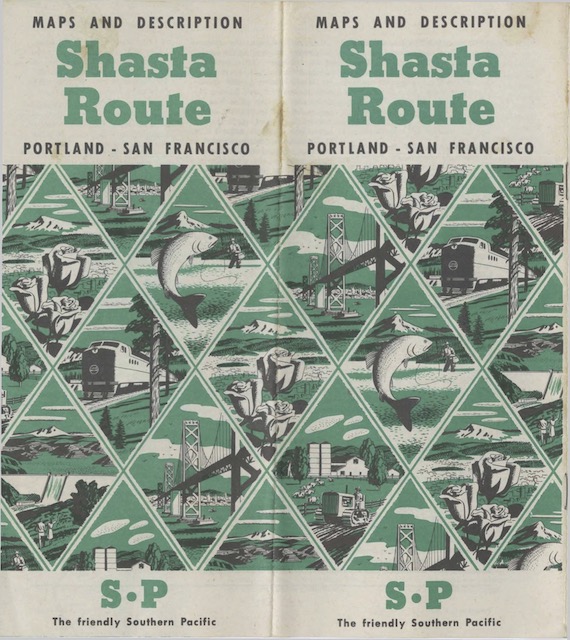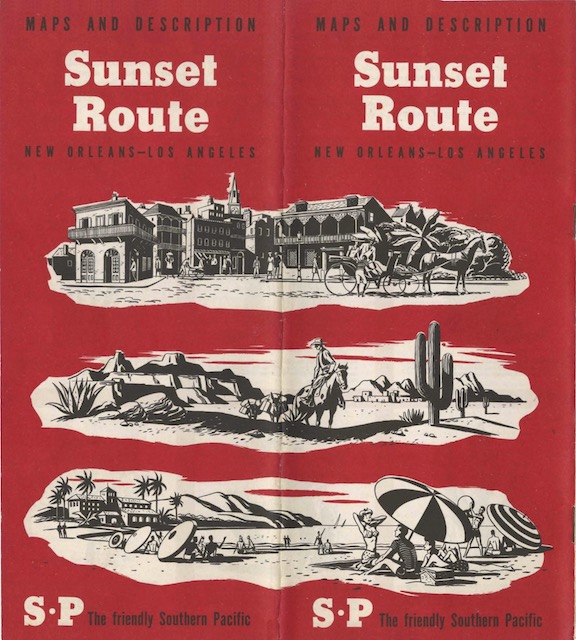We’ve seen these two booklets before, the main differences being that the others were from a different year. First is a 1947 booklet for the Shasta Route, which was served by the all-Pullman Cascade; the bargain Beaver, which left Portland ten minutes after the Cascade; the Klamath, which was in daylight from Portland to the California border; and the West Coast, which went to and from Los Angeles rather than Oakland. All of these trains spent much of the most scenic portions of the route after dark.
 Click image to download a 5.7-MB PDF of this 12-page booklet.
Click image to download a 5.7-MB PDF of this 12-page booklet.
My quick comparison with the 1950 edition of this booklet (which was after the Shasta Daylight began operating) finds very few differences. Pages 6 through 9 are slight different but mainly in that the page breaks in the text are changed; I can’t find any differences in the actual text itself.
 Click image to download a 7.9-MB PDF of this 16-page booklet.
Click image to download a 7.9-MB PDF of this 16-page booklet.
Second is a 1948 booklet about the Sunset Route. This was two years before the Sunset Limited was streamlined, while the 1958 edition was eight years after streamlining. There are a few differences between the two booklets, though nothing to do with the streamlined train.
As typical for Southern Pacific booklets, the cover shown above is the back cover. The front cover has introductory information and the addresses of a few passenger agents. Most of the agents had changed by 1958.
On page 3, the 1948 booklet says, “A very special industry [in Mermentau, Louisiana] is the extensive cultivation of Bermuda or Easter lilies for shipment to all parts of the United States.” That industry must have died out as this was deleted from the 1958 edition. There are quite a few other minor changes like that, but they all balance out so that pages 14 and 15 remain unchanged.
